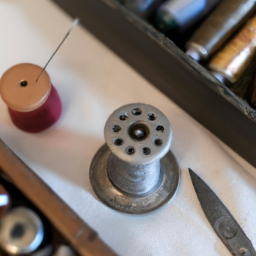
A Brief History of the Sewing Machine

The sewing/” title=”Stitching Stories: A Beginner's Guide to Sewing”>sewing machine, one of the most revolutionary inventions in the textile industry, has transformed the way we create garments and other fabric-based products. Let’s take a brief journey through its fascinating history.
Invention and Patents
The first functional sewing machine was invented in 1790 by Thomas Saint, an Englishman. However, his machine was never widely used and eventually got lost in history. It wasn’t until the 19th century that sewing machines began to gain popularity.
In 1830, French tailor Barthelemy Thimonnier patented the first practical sewing machine. It utilized a single thread and a hooked needle, producing a chain stitch. Thimonnier’s machine was used for sewing uniforms for the French army, but it faced strong opposition and was even destroyed by a mob of French tailors who feared unemployment.
Mass Production and Advancements
In the 1850s, Isaac Merritt Singer, an American inventor, improved the design significantly and formed I.M. Singer & Co., a sewing machine manufacturing company. The Singer sewing machines became immensely popular due to their durability and ease of use.
Over the years, various advancements were made in sewing machine technology. In 1851, American Elias Howe patented the lockstitch sewing machine with a thread shuttle. This design laid the foundation for subsequent improvements.
Later, in the 1860s, the world saw the advent of the first commercially successful rotary sewing machine invented by American engineer Allen B. Wilson. This machine featured a continuously rotating hook underneath the needle, enabling smoother and faster stitching.
Modern Innovations
The early 20th century witnessed the introduction of electric sewing machines, which further increased efficiency and productivity. The development of computerized sewing machines in the late 20th century brought additional automation and versatility to the craft.
Today, sewing machines come in various types and forms, including mechanical, electronic, and computerized models. They cater to different sewing needs and have features like automatic buttonholing, decorative stitching, and programmable embroidery.
Conclusion
The sewing machine has undoubtedly revolutionized the textile industry and made sewing accessible to millions of people worldwide. From its humble beginnings to the cutting-edge models of today, this remarkable invention continues to evolve. Whether used for personal projects or mass production, the sewing machine remains an indispensable tool in the world of fabric creation.
Sources:
britannica.com,
wikipedia.org




